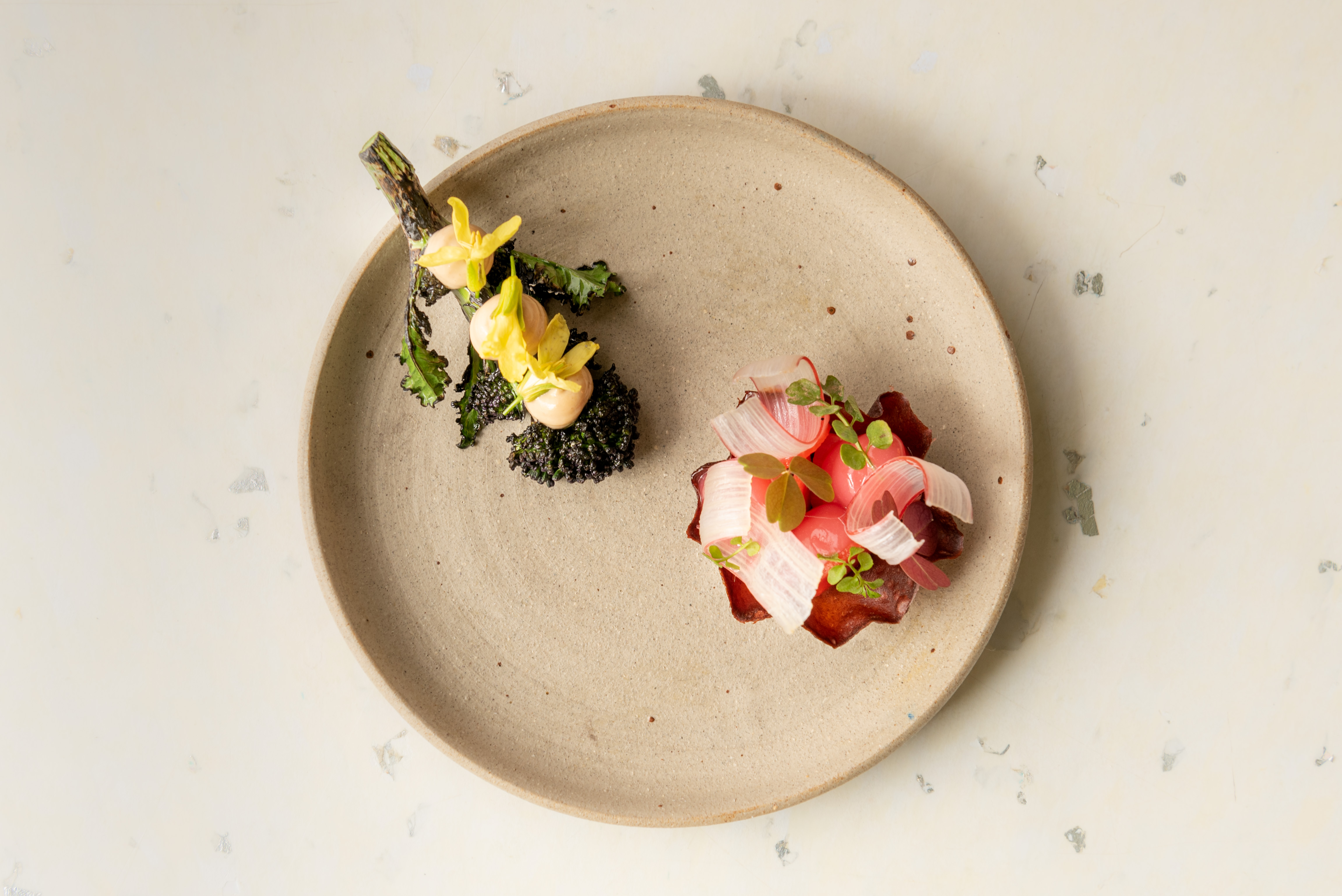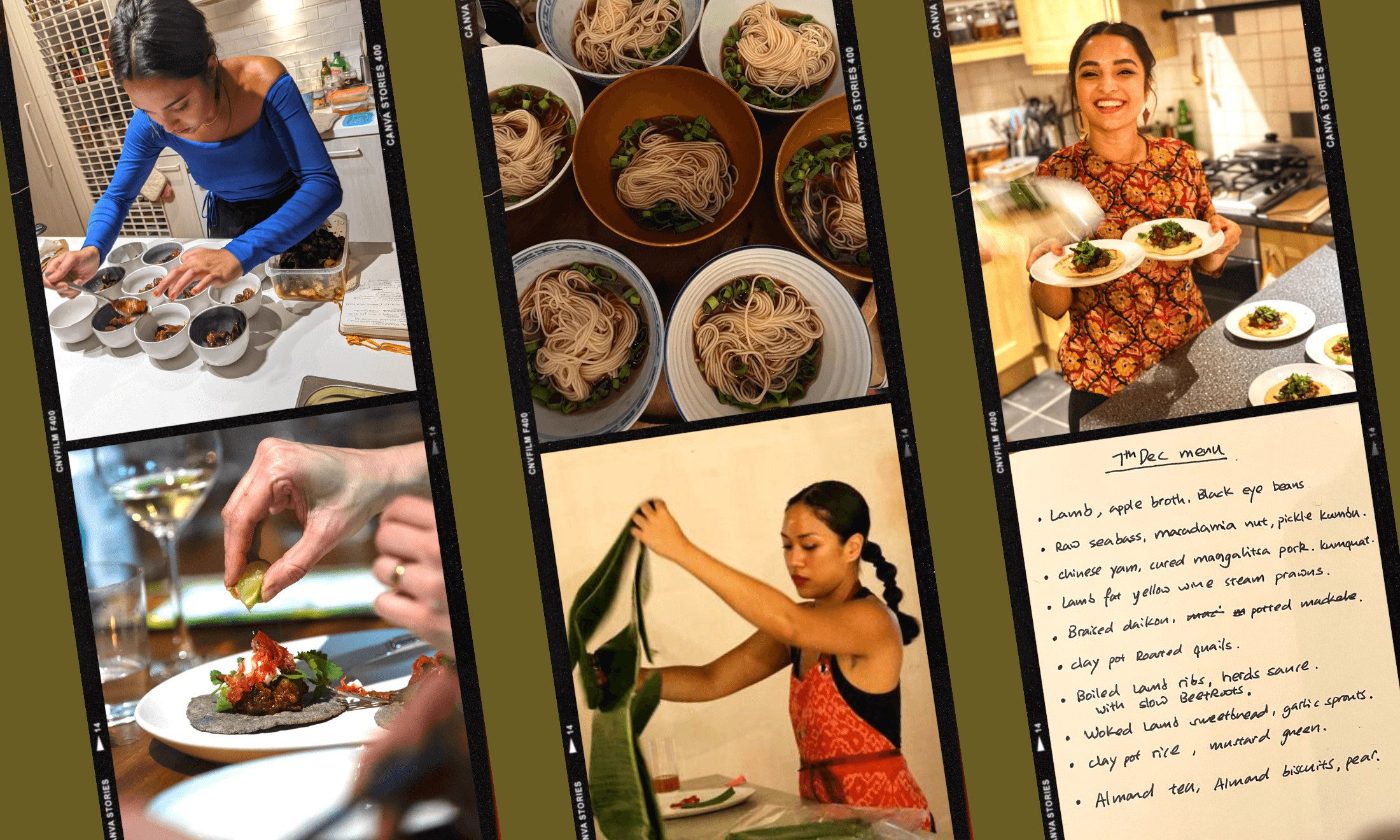
Photography by Kim Lightbody
A voyage into the peels, scraps and rinds of sustainable and zero waste dining
Leah Cowan and Ella Jay Taylor
12 Jan 2020
Have you ever wondered where the unloved bananas that don’t get eaten at a hotel breakfast buffet end up? Or thought: what happens to those odd shaped corners of cheese that aren’t deemed uniform enough to grace a cheese board? No, us neither. That’s probably because it has seemingly become normalised for restaurants and cafes in the UK to chuck away 320 million perfectly edible meals every single year, without blinking an eye. This inefficiency costs restaurants on average 97p per dish, as roughly a quarter of diners typically leave food on their plate. So what’s the solution; how can the UK hospitality industry shape up and, for example, stop swilling 290m litres of milk down the sink every day?
This year has seen a rise in “zero waste” and low waste restaurants popping up in London. The idea is to serve up tasty meals while also not contributing to turning the planet into a burning trash fire of plastic packages and uneaten excess coq au vin. Of course, smaller restaurants with less of a profit margin to play with have already been operating on this basis – think of the local caff where the same eight breakfast items are offered in a million different hangover-busting combinations. So are zero waste restaurants just a fad – old tactics repackaged as new? Douglas McMaster, Head chef at Silo, which claims to be world’s first zero waste restaurant, famously received flack for saying that Brighton wasn’t edgy enough for his “crazy dishes”, which leads us to wonder whether zero waste dining is simply just another wacky (and expensive) experience to tick off in foodie bingo. We visited three restaurants on a quest to reduce waste and to find out for ourselves.
Ugly Butterfly
Ugly Butterfly by chef Adam Handling is a humble star in his constellation of restaurants with a twist: it serves meals created using the food waste from its upscale sister restaurants. Before visiting, our expectations of possible vegetarian and vegan options were duly managed, but we were still able to eat a number of small plates and sides that were already veggie, needing little or no alteration – save for the banana bread side which would usually be served with chicken butter (apparently, it’s a thing).
Ugly Butterfly’s focus on sustainability informs the design of the whole restaurant, with tables made out of waste timber, and water cups made from recycled glass. Their ethos is “nose-to-tail” and “root-to-stem” eating, which uses the whole of an animal or vegetable and repurposes parts which would normally be discarded. The resulting menu is peppered with dishes like “Left-over cheese board doughnuts”, delightfully gooey balls of melted cheese which spilled out from their fluffy doughnut casing, and were – as the name suggests – made from the remnants from preparing cheese boards served in another restaurant.
A team-member at Ugly Butterfly clarifies that nothing described as “leftover” on Ugly Butterfly’s menu has ever touched a customer’s plate. The menu is actually made up of food waste leftovers from their sister venues (such as Belgravia’s Belmond Cadogan Hotel), which over-order produce to ensure guests have optimum “choice”, and often use small pieces of – for example – a corn cob, but not the whole vegetable. Ugly Butterfly’s “corn ribs with salted peanuts” uses the remainders of a corn cob, carving it lengthwise into skinny rib-shaped pieces which are perfect for nibbling on.
In between courses we were left wondering why the leftover-producing restaurants don’t just improve their practices. As Ugly Butterfly’s dishes depend on the other functioning restaurants in the brand, it’s interesting that they had to open a whole other restaurant to realise the concept of zero waste eating. Dining at Ugly Butterfly also made us think about the importance placed on how food looks on our plate. A melt-in-the-mouth “Salt-baked celeriac with lime skins and mint stalks” was accompanied with lime wedges which had been evidently already been zested for use in a dish in one of the other restaurants, but were still juicy and unsqueezed. Standards and expectations of the range and types of dishes diners want rely on food being produced un-sustainably; grown in hotter countries with chemical assistance, and flown in to offer consumers as much choice as possible all year round. Ugly Butterfly’s attempts to disrupt this should be welcomed.
CUB
Luxury does not have to be wildly wasteful, and sustainability does not have to be twiddling little scraps: a third way is possible, and CUB seems to have found it. CUB focuses on low waste and sustainable practices. The manager, Fernando Monzón , tells us that fine dining isn’t usually associated with sustainability, but that CUB are trying to change that. He tells us that it’s not just about furniture made of pallets and eating scraps – although their tables are made of yoghurt pots (lids included) and the result looks surprisingly like marble.
CUB are actually a plant-based restaurant – not that you’d be able to tell from the menu, which prefers to leave much to be discovered with cryptic dish descriptions such as “Hispi, Shio Koji, Green Stuff” and “Celeriac Coffee Broth’d”. That said, they do use meat products which they consider to be sustainable by making use of parts of the animal which aren’t usually eaten. CUB claims to produce 20% of the waste of a conventional restaurant and, much like Ugly Butterfly, most of their waste comes from packaging. CUB utilise as much food waste as possible, coordinating between the rotating food and drinks on the menu to ensure that ingredients are used to their full potential.
CUB’s Mixologist Ryan Chetiyawardana (also known as Mr Lyan) is another one of the minds behind the restaurant, and ensures that all of their cocktails are “closed-loop”, finding creative ways to make use of ingredients that would usually be thrown away. For example, leftover cacao husk sourced from a hot chocolate company is infused to make the “Whiskey, Cacao Husk, Plum” cocktail, resulting in a warming chocolatey and fruity fusion. CUB even has a fermentation room, where buttermilk is turned into “garum” – a savoury sauce similar to soy sauce – to be used in cocktails. Drinks highlights we were served included a gin cocktail made with “celery citrus” made using citric acid and celery instead of lemon to cut down on leftover peel, and a take on a whiskey sour using apple cooked with cardamom. The premise underpinning the whole restaurant is “upcycling not just recycling” and at the very end of their system, the food waste they are left with is sent back to a farm that they work with to be turned into compost.
Memorable dishes included a savoury custard with miso, which had a nourishing fish-like saltiness, and was complemented with sweet jerusalem artichokes and a smoky charcoal oil powder. Fernando explained that in classic menus the demand for variety produces excessive amounts of waste as kitchens have to stock up in preparation for any dish being selected. To counteract this, CUB have a £67 set menu, and choose dishes carefully to consider waste. By being purposefully vague in dish descriptions, they claim to harness the element of surprise and avoid people saying they don’t like certain ingredients, encouraging diners to try flavours in new ways. However, we are assured that they aim to accommodate dietary requirements where possible and try to ensure that everyone is eating the same dish or something similar. As a bookings-only restaurant, CUB can plan accordingly to minimise food waste and coordinate with their suppliers to see what produce isn’t selling, and consider how they can transform it into something to serve in the restaurant.
Island Social Club
The demand for large menus offering lots of options seems to be a key barrier to reducing waste in restaurants. “We all have to change our perspective on how we approach eating food” explains Marie Mitchell, of Island Social Club, a contemporary Caribbean restaurant taking steps to become as sustainable as possible. She tells us that a healthier approach to eating out is “once it’s gone, it’s gone”, and that diners can’t keep “going to restaurants [and] expecting there to be 20 different dishes on the menu and being able to choose from all of them.”
According to Marie, one of the biggest “juggling acts” in becoming a sustainable restaurant is managing food waste. “It’s a fine balance to strike between having enough, not running out and not having too much. […] For parties of eight or more, Island Social Club have a set sharing menu, so that they can prepare accordingly and avoid wasting food using companies like First Mile which recycle waste like fruit peels and use them to produce energy.
Marie also develops relationships with smaller suppliers who don’t have “minimum quantities” for orders, and builds dishes around seasonal availability. She tells us: “we had an aubergine dish on the menu which was really popular, but as soon as we stopped being able to source our aubergines from Essex and had to get them from the Netherlands we took the dish off the menu because the quality changed”.
Reducing waste in restaurants appears to involve a lot of hoop-jumping, and is almost counter-intuitive in an industry premised upon choice, luxury and excess. However, restaurants like Ugly Butterfly, CUB, and Island Social Club are trying to be more conscious of how food waste contributes to the floating landfills overflowing with food, discarded simply because a diner picked another dish.
The relationship between “fine dining” and zero waste is interesting – it would be fair to assume that restaurants genuinely “repurposing” food waste should be able to sell the dishes at a much lower price point, but this doesn’t seem to be the case. We can only hope that as the movement gathers steam, it expands and becomes more accessible, learning from the waste-reducing practices of restaurants who build it into the way their menus are formed. Until then, zero-waste dining will remain an occasional “guilt-free” treat for those who can afford it, and an aspiration for other restaurateurs hoping to change up how we relate to what’s on our plate.









